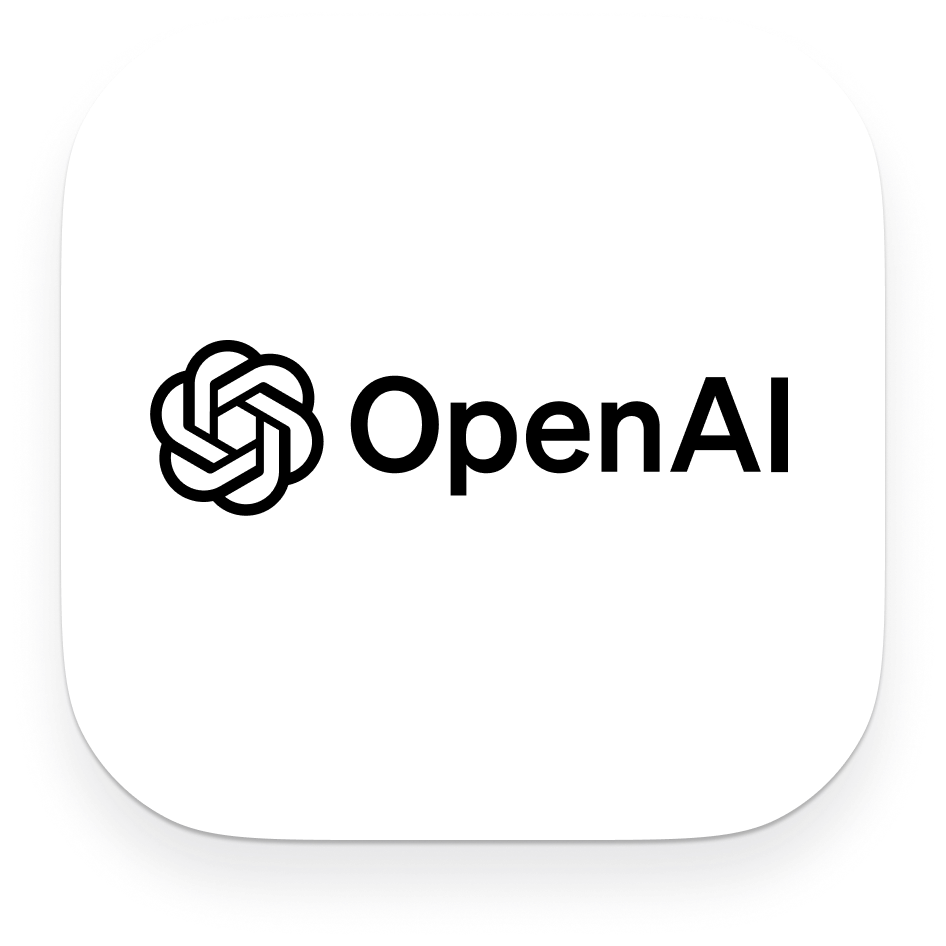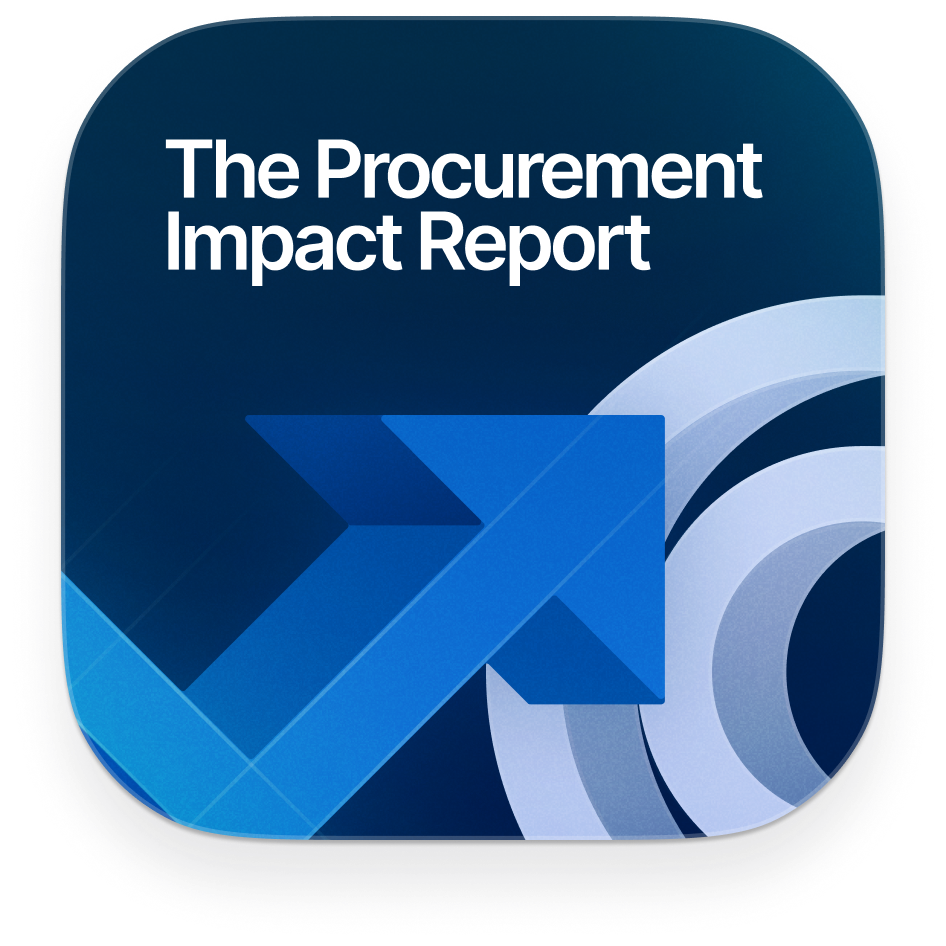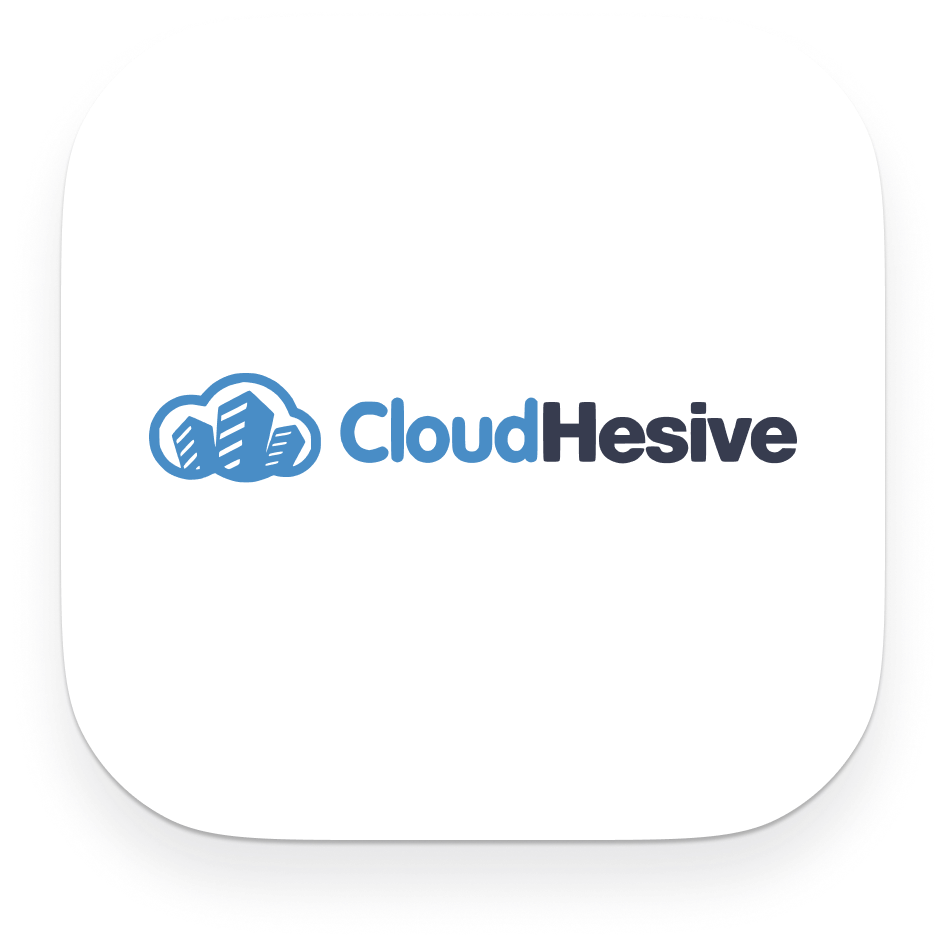Introduction
As vendors rapidly embed AI capabilities into their platforms, the inadvertent result has been that they have gained a stronger position in negotiations - leaving procurement and finance teams playing catch-up at a pace they can’t match.
We've had hundreds of conversations with companies across the globe on this topic, and the same questions have always appeared:
This report provides these answers, plus actionable insights and guidance to help avoid overspending, and secure maximum value from your AI investments.
The new world
The core of all of this disruption is that traditional flat-fee or per-user pricing models fail to reflect the variable compute requirements and dynamic value of AI-driven functionality.
Vendors have been quick to pivot, replacing legacy pricing frameworks with models that better align with their costs.
Outcome-based pricing
One of the most notable shifts is the rise of outcome-based pricing. In these models, charges are tied to specific business outcomes - such as successful customer support resolutions or qualified lead generation.
This structure can lower adoption barriers, removing limits on users or data input. However, it introduces a risk of unpredictable costs.
Procurement is not naturally kept abreast of strategic shifts, so normally needs to proactively discover these things to future-proof contracts against vendor lock-in.
Establish maximum spend limits and minimum performance thresholds to control costs and ensure value.
Combine a base subscription with a lower cost-per-outcome fee.
Demand transparency into how outcomes are calculated and redefine to what is valuable to you as necessary.
Ensure costs are appropriately allocated and ratioed if humans play a role in generating outcomes.
Agree on when outcomes are evaluated and when price adjustments apply.
AI as an upsell - and a lock-in risk
Vendors are increasingly offering AI features as premium add-ons, or embedding them into higher-tier subscriptions.
While this adds the desired functionality, it often comes without guaranteed ROI given the relative infancy of AI features.
Bundling AI tools into existing ecosystems can also lead to Vendor Lock-In, particularly when time has been spent training AI tools to your needs, or when your data becomes tightly integrated into a single platform.
Negotiate favorable pricing for upsells or future add-ons.
Ensure Service Level Agreements (SLAs) are in place for data portability and platform exits.
New AI contract clauses
Vendors are frequently adding new clauses to their contracts - designed to enhance monetization and platform stickiness while limiting liability.
Vendors protect their IP by limiting visibility into how their AI models and features operate, and deliberately use vague, broad contractual terminology when outlining how customer data will be exactly used.
Vendors often claim ownership of AI-generated content - even if it's based on customer data.
While customers view their data as their own IP, vendors are using this for ‘free’ to continuously train and improve their own model, boosting their product's value, attracting new customers and supporting renewals - meaning the vendor potentially stands to gain far more than the customer.
Definitions of "performance" are shifting from specific guarantees to ambiguous outcome-based metrics.
This makes it far trickier for customers to nail down specific performance warranties and SLAs, and gives the vendor more leeway with performance-based financial uplifts and penalties.
Contracts frequently include protections and indemnities for vendors against hallucinated (output that is presented as fact but is fabricated, incorrect or nonsensical) or harmful AI outputs.
If built or deployed without suitable safeguards, this puts all the risk of using an inherently creative and independent ‘black box’ technology on the customer.
Amend / define relevant contract clauses to gain sufficient transparency into how your data will be used for model training and evolution.
Gain assurances that where your data is ingested by the tool, it will be anonymised and not disclosed to any other customers.
Data ownership (vendor, customer, or both), and how data is used for model training, should be clearly outlined - with opt-out clauses for training.
Fulfilment metrics should be based around the exact outcomes you want to achieve.
These should cover storage, deletion, and access.
The enterprise SaaS AI "moat strategy"
Large vendors are increasingly building integrated AI ecosystems - designed to lock customers into their platforms.
Take Salesforce, for example. Having acquired the popular comms tool Slack in 2021, they’re now repositioning it as the front-end for a suite of AI agents branded as Agentforce:
- Slack AI: unified natural language search across Slack, Salesforce, and third-party tools
- Canvas: shared whiteboards embedded directly into Slack channels
- Salesforce Channels: CRM-native threads that bring opportunity data directly into Slack
- Workflow automation: trigger Salesforce flows from inside Slack
- Slack Enterprise+: a top-tier Stock Keeping Unit (SKU) now bundled with Agentforce
This seems compelling - strong features and capabilities that could offer substantial productivity and performance benefits.
But in the process, Salesforce is also restricting third-party integrations - limiting which tools can and cannot access, store or index certain data (most notably Glean). This creates a closed-loop system designed to retain control and increase stickiness.
“These AI investments are more than just a tool purchase - they’re a bet on your strategic AI operating system for the next decade.
You can try to remain agnostic, but big players are aggressively locking down who can also access ‘their’ customers by controlling the data.”
What you need to look for
AI investment has surged - enterprise spending grew 394% year-on-year. But without clear use cases, there's a high risk of wasted spend - already at epidemic levels for businesses.
SaaS wastage by company size (% vs. $)
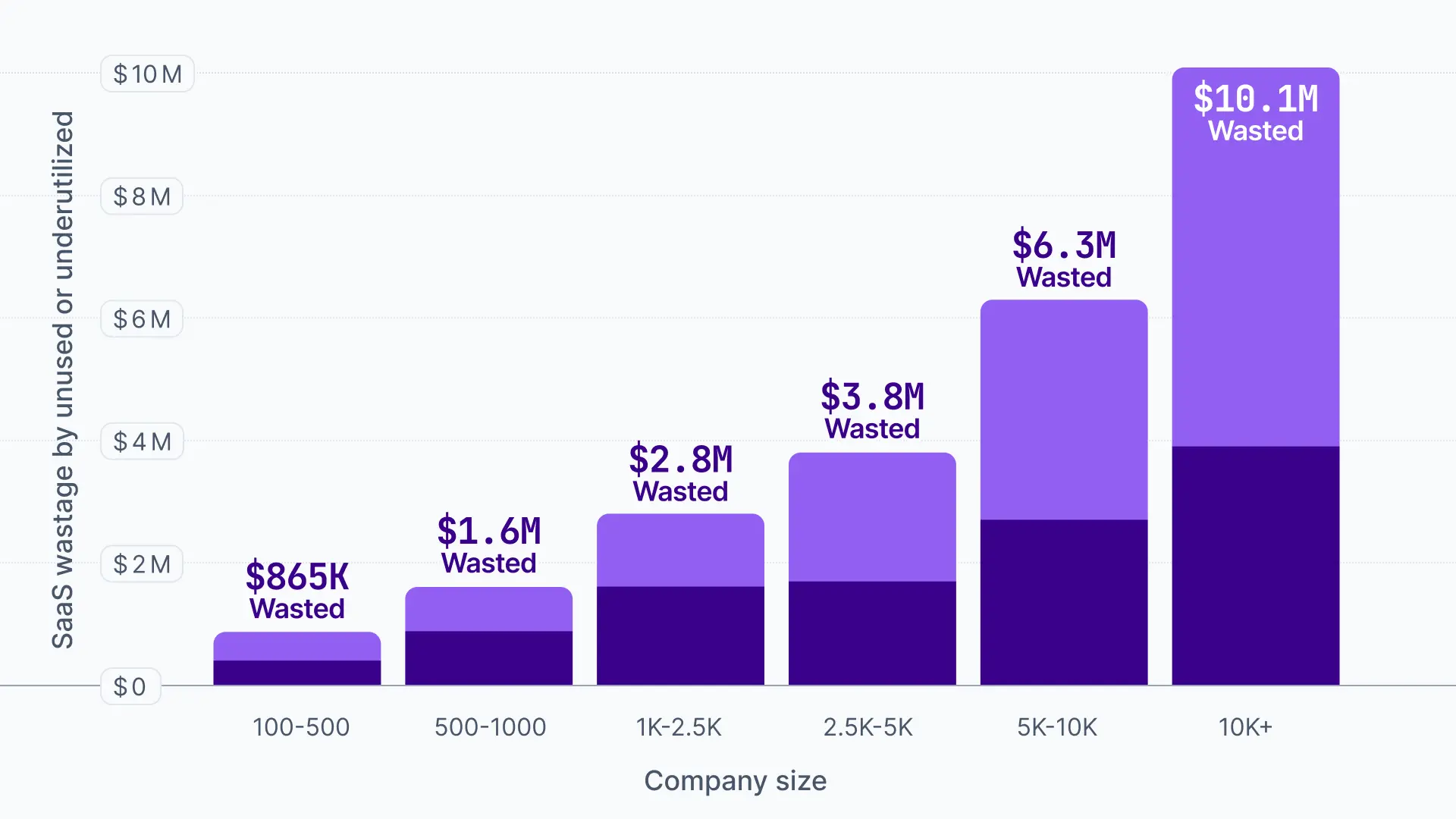
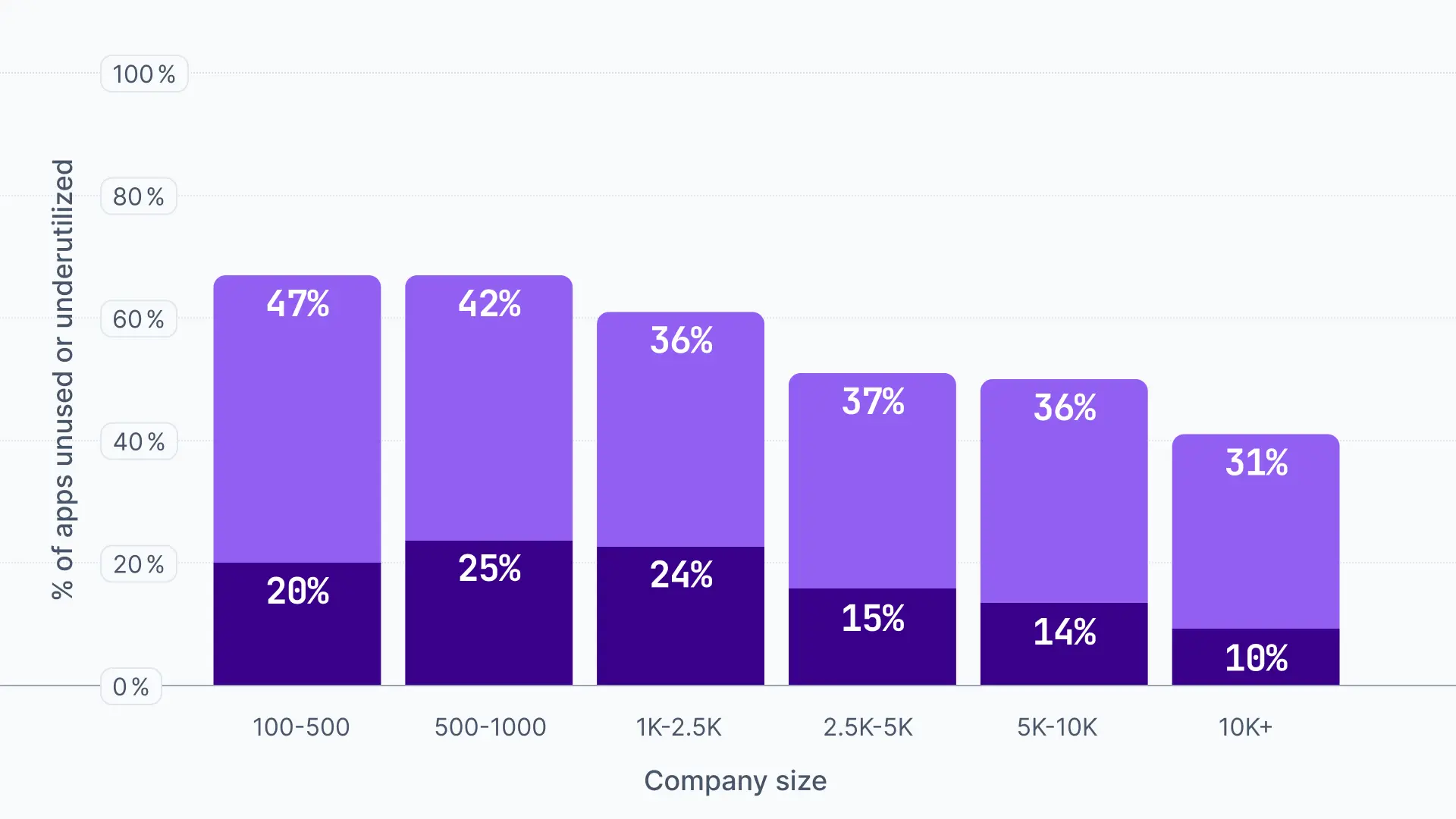
Avoid adopting AI tools simply due to hype, or because a competitor has it. The primary focus should be the outcome, efficacy, performance and ROI that the AI tool delivers. Ensure there are crystal clear reasons for their implementation - both on a departmental and wider company level.
“Can it deliver high performance and high ROI? What are the outcomes? What is this new AI tool going to replace? What’s it going to specifically do that isn’t being done already?
Ask probing questions, even if they are almost ‘anti-AI’. It’s about nailing the business case. If you're not clear, you're just buying into hype.”
AI is only as good as the data it’s fed. Common issues include:
Without human oversight, intelligence and strategic decision-making, AI models can amplify flawed inputs - creating problems that compound over time as the model continuously learns and evolves.
A poll in a recent Vertice webinar attended by over 100 finance and procurement leaders found that only 32% of organizations are actively implementing AI on a company-wide level.
This isn’t surprising. A thorough, comprehensive assessment must be conducted to confirm how ready a company is to onboard, and maximize the potential of, AI.
Any new AI platform must seamlessly integrate with your existing stack, otherwise you risk creating a siloed tech stack where the AI tool can’t reach its maximum effectiveness and ROI.
And your vendor’s AI roadmap must align with your own. Otherwise, you risk Vendor Lock-In in the long-term.
AI adoption isn’t just technical - it’s cultural. Without adequate training and change management, teams may underuse tools or seek unsanctioned alternatives.
Proper onboarding processes are also instrumental in highlighting that AI enhances human capabilities, rather than replacing them.
AI isn’t a replacement for building relationships, or applying contextual judgement to AI recommendations or decision-making. But by taking on repetitive, tedious or resource-intensive tasks, it enables concentration on more strategic areas that need attention.
“AI can do a lot but without the right change management, internal alignment and the right documentation, it won’t do what’s intended. It still has to be powered by humans.”
Because AI tools integrate and learn from internal systems, they introduce new compliance and security risks.
Mitigation options include using anonymized or aggregated data, regular audits of tool integration and data access and including AI-specific policies in your internal compliance frameworks.
Many vendors market basic automation or data analytics as AI. Procurement teams must ask the right questions to uncover real capabilities.
“Vendors know AI is a buzzword.
We need to be careful, stay skeptical and look under the hood of any AI solution we encounter.”
Typical questions might include:
Paying an AI premium for tools that offer no real AI benefit is a guaranteed way to waste budget.
Getting ahead
To manage AI purchasing effectively, procurement must evolve.
Centralize intake
A user-friendly, customized and flexible single point of entry into the procurement process enables full control of all purchasing requests.
This prevents shadow AI adoption - a potentially ruinous scenario for finances and security thanks to AI’s long integration tentacles - and enables the automation of low-risk approvals.
Companies like CloudHesive incorporated security compliance steps, including checks for SOC 2 Type 2 and ISO 27001 certifications, into their workflows through a centralized intake system.
Update workflows
Procurement processes can be orchestrated automatically based on pre-set criteria. This enables the company AI strategy to be baked into everyday procurement actions.
Workflows should be adapted for AI buying, especially:
- AI specific benchmarks and pricing approvals - even more important given vendors’ new pricing models
- Document scanning for AI contract clauses
- New approval routing as new stakeholders may be required to confirm an AI tool’s suitability
Dedicated security and privacy steps
With AI requiring wholesale changes in data security and privacy, you need to ensure your workflows contain the following:
- Updated compliance and security reviews and steps in the workflow to accommodate the new risks
- Data privacy questionnaire for vendors should be updated to include how data is used for AI model training
- Updated automated risk reviews with AI regulations
- New requirements for legal approval, such as performance
- SLAs, data protection and data opt-outs.


